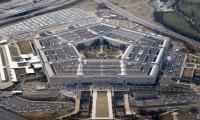On January 24, 1946, the UN General Assembly adopted its first resolution which called for “the elimination from national armaments of atomic weapons”. The resolution reflected the view that nuclear weapons have the potential to cause destruction on an unimaginable scale and we must outlaw them in order to mitigate the risk they pose to the survival of our entire species.
However, no concrete action was taken in subsequent years because of the differences between the US Baruch Plan and the Soviet Gromyko Plan. As I write these lines, the text of a nuclear ban treaty is being negotiated among diplomats from more than 130 countries at the UN. The envisaged treaty aims to formally outlaw the development, stockpiling and use of nuclear warheads and establish an international norm against the possession of nuclear weapons.
But the issues related to the elimination of existing nuclear weapons programmes will remain unaddressed since all states possessing nuclear weapons remain absent from UN nuclear ban negotiations.
The ban treaty can be an important step towards achieving a world that is free from nuclear danger. In order for these negotiations to be meaningful, various nuclear-armed states – including Pakistan – must also join the negotiations and affirm their commitment to Article VI of the Nuclear Nonproliferation Treaty (NPT).
Article VI of the NPT states: “Each of the parties to the treaty undertakes to pursue negotiations in good faith on effective measures relating to cessation of the nuclear arms race at an early date and to nuclear disarmament and on a treaty on general and complete disarmament under strict and effective international control”. By refusing to be part of negotiations to ban nuclear weapons, the NPT states are in violation of their good-faith obligations under Article VI.
Russia and the US collectively have more than 93 percent of all nuclear weapons in the world. Any practical steps toward complete global nuclear disarmament must involve meaningful participation from these two countries. There is an increasing concern that the NPT states cannot continue to build a massive number of nuclear weapons while they simultaneously deny nuclear capability to other states.
The cold war is long gone. But nuclear weapons are still mistakenly seen as a key to maximising security. The rationale for nuclear weapons as weapons of deterrence is quite weak. The security challenges of the 21st century are too complex and nuclear weapons are useless in addressing these challenges. Yet, the continued existence of these weapons of genocide poses a substantial risk of their unauthorised use and could thereby endanger global security.
At the 2010 NPT review conference, all the member states fully endorsed the objective of “a world without nuclear weapons” and agreed that failure to act on nuclear disarmament could risk “catastrophic humanitarian consequences”.
States – who are parties to the NPT – conduct formal reviews every five years to assess implementation regarding the treaty’s provisions and – based on those findings – recommend specific steps to strengthen implementation. The imbalance between the obligations and commitments of the Non-nuclear Weapon States (NNWS) parties and the Nuclear Weapons States (NWS) parties has been a key point of contention since 1975.
In order to achieve the vision of the NPT, world leaders need to adopt a phased approach by concentrating first on the easier steps that could lead to more difficult steps. The 2010 NPT Review Conference was viewed as a success because it achieved a consensus on 22 concrete nuclear disarmament actions and made the implementation of Article VI of the NPT measurable against a set of clear benchmarks.
In South Asia, the risk of nuclear catastrophe is far greater today than it was before. It is unfortunate that the efforts to rid the world of nuclear weapons continue to be influenced by the larger geopolitical objectives of major powers. Over the past few years, New Delhi is rapidly increasing the size of its fissile material stocks and enhancing its delivery capabilities. But the US remains tight-lipped. More alarmingly, in an effort to delegitimise the peaceful Kashmiri struggle, the Trump administration has designated Syed Salahuddin, a Kashmiri freedom fighter, as a specially designated global terrorist (SDGT).
A number of experts argue that, like the Comprehensive Test Ban Treaty (CTBT) and the Chemical Weapons Convention (CWC), the NPT should also have an organisational framework and an executive council. The idea of institutional infrastructure for the NPT is premised on the belief that it would serve as a guardian organisation that is charged with serving the objectives of all treaty parties in pursuing non-proliferation and disarmament. The NPT should be able to send a strong signal to non-compliant countries that they will have to face international isolation and containment if they choose to go against treaty obligations.
So far, the NPT lacks an institutional mechanism that could function as ombudsman to receive complaints about non-compliance or any other difficulties experienced by the states parties.
In today’s world, the fears of runaway proliferation are rapidly growing. This is primarily due to the reluctance of major powers to implement Article VI of the NPT in letter and spirit. Experts have cautioned that, given the insurmountable difficulties of the amendment process, the new institutional framework for the NPT should be designed in a way that it requires no amendment to the treaty.
The new framework could greatly help fulfil the NPT’s goals by providing a permanent ‘institutional memory’ to coordinate further nonproliferation initiatives.
Email:rizwanasghar5@unm.edu
According to Chanakya, secret of strong nation lies in ability to protect its citizens
Rapid economic progress was made possible under Modi's leadership if not ‘Modi's guarantee’
Pakistan was considered water-abundant country, with per capita water availability being 5650 cubic meters in 1951
Shrine of Mian Mir.—TheNews/FileMy history professor once referred to a theory that says the developmental telos of...
If Pakistan does not take prompt and decisive action, it could find itself at forefront of world's first water conflict
Please note that dam survey team from World Bank had proposed building of this dam in 1955







